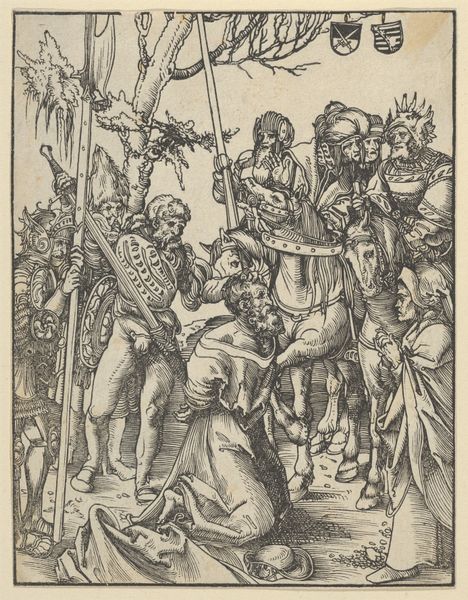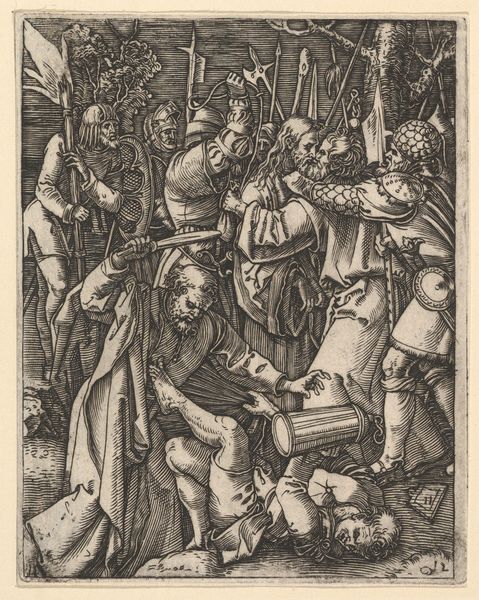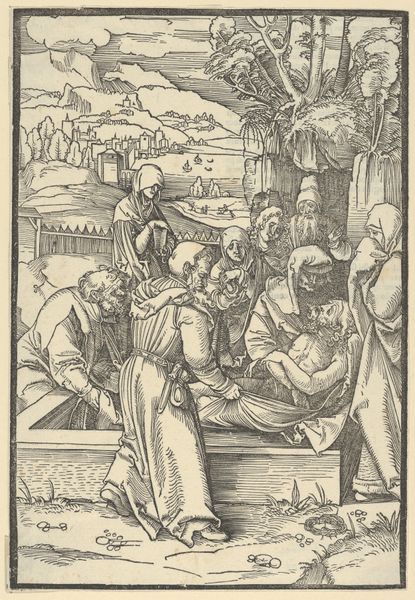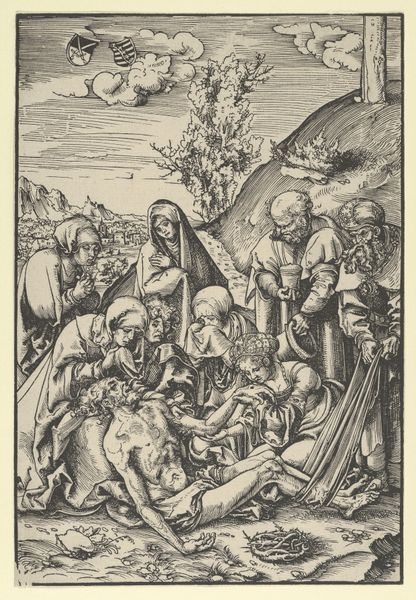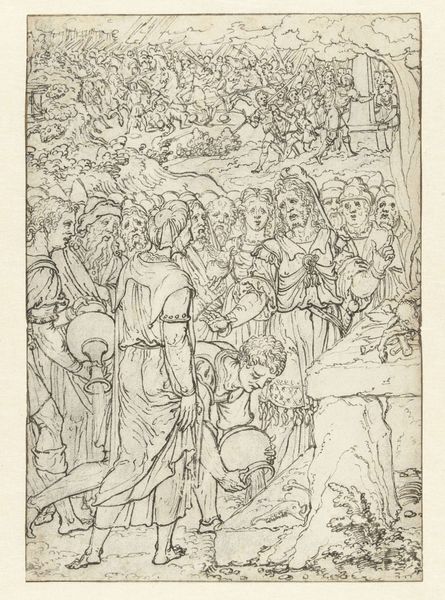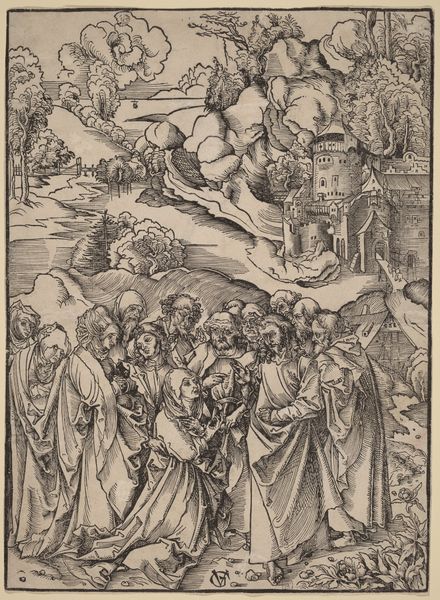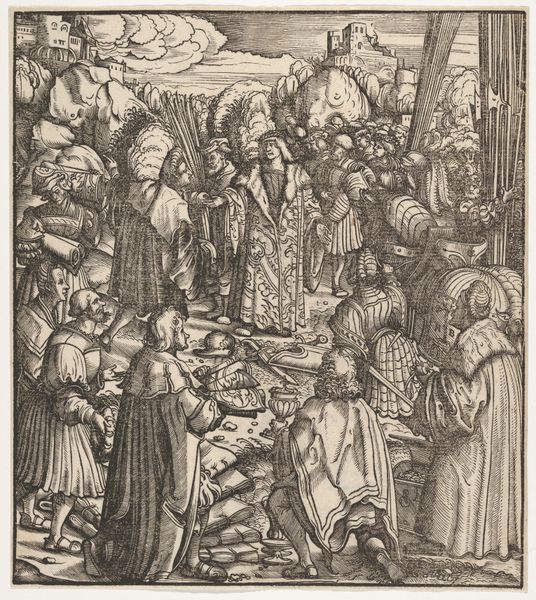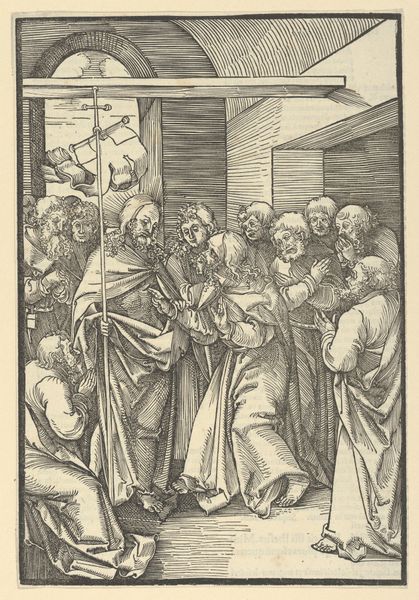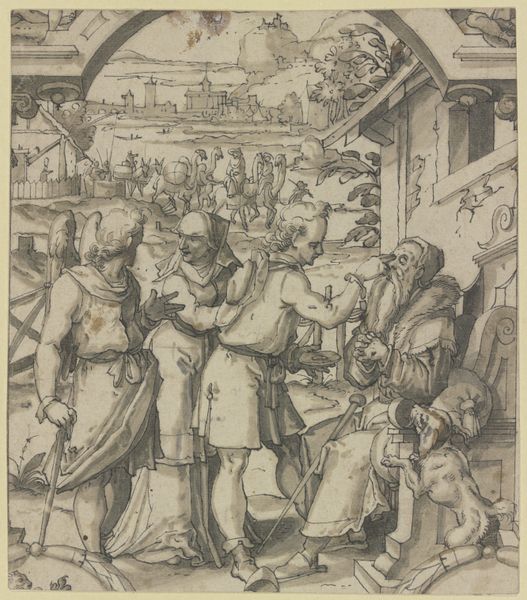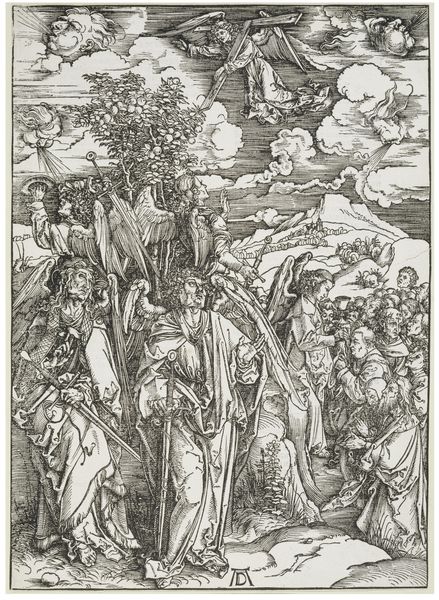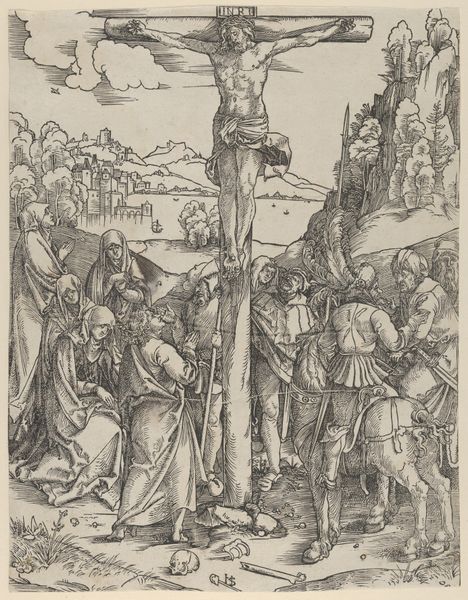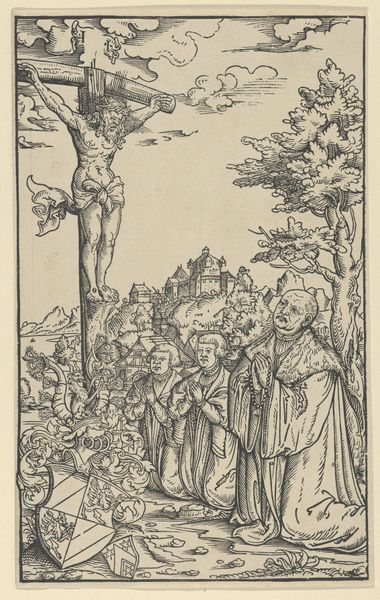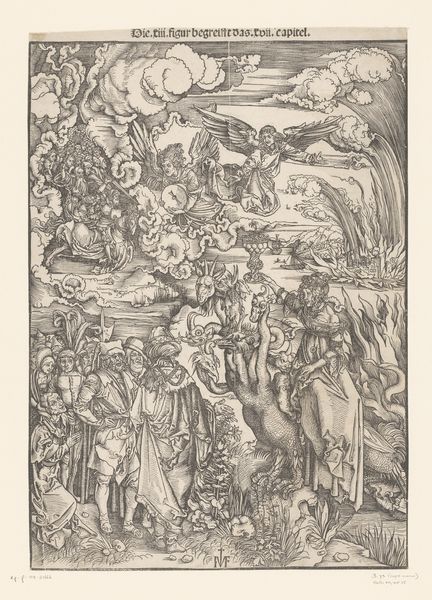
Christ Before Annas, from the Passion 1472 - 1553
0:00
0:00
drawing, print, woodcut, engraving
#
drawing
#
narrative-art
# print
#
figuration
#
woodcut
#
line
#
history-painting
#
northern-renaissance
#
engraving
#
christ
Dimensions: Sheet: 9 3/4 × 6 11/16 in. (24.8 × 17 cm)
Copyright: Public Domain
Curator: My first impression is the density. A stark print, overwhelmingly dark, communicating oppression in a visceral way. Editor: We’re looking at “Christ Before Annas, from the Passion,” a woodcut by Lucas Cranach the Elder, likely completed between 1472 and 1553. Currently, this print is held here at the Metropolitan Museum of Art. It depicts the scene of Christ’s trial before Annas, as the title suggests. Curator: The iconography here is striking. Look at the figures surrounding Christ, each face a grotesque mask, conveying a deep inhumanity. The entire composition feels deliberately claustrophobic, emphasizing Christ's isolation. Editor: Absolutely. The political weight of such an image in the Northern Renaissance shouldn’t be understated. Cranach, deeply involved in the Reformation, frequently used his art as propaganda. Images like these solidified public sentiment against the perceived corruption and injustice of the Catholic Church. Curator: Indeed, consider the symbol of the chained feet, juxtaposed against Annas, secure on his throne-like chair. There's a power dynamic so overtly rendered. What about the dog snarling at the feet of Annas, surrounded by playful cherubs, symbolizing evil masked with purity? Editor: The dogs are an important detail. Images and the creation of popular prints helped disseminate reformation ideals across the public sphere. In Cranach’s case, his connections to powerful reformers ensured his art reached a large audience, embedding this critique within the public’s cultural understanding. Curator: What strikes me most is how Cranach utilized the power of the image to instill feeling and propagate change. Even divorced from its immediate context, one cannot escape its sorrowful feeling. Editor: The role of art, like this print, extended beyond aesthetic enjoyment; it acted as a powerful socio-political instrument. It continues to shape historical memory of these critical moments.
Comments
No comments
Be the first to comment and join the conversation on the ultimate creative platform.
